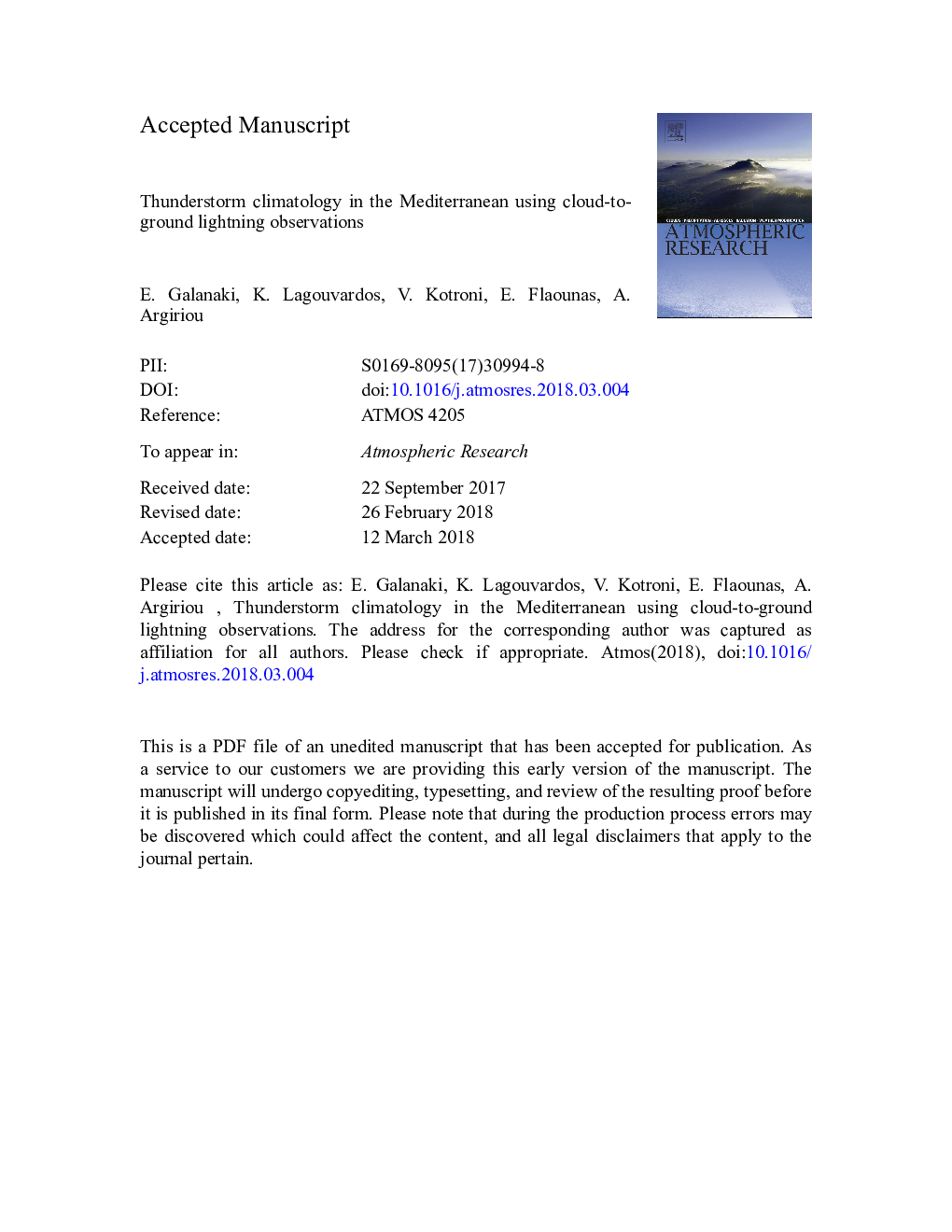| Article ID | Journal | Published Year | Pages | File Type |
|---|---|---|---|---|
| 8864666 | Atmospheric Research | 2018 | 32 Pages |
Abstract
Mediterranean thunderstorms climatology is analyzed for a 10-year period from 2005 to 2014. For this analysis, we applied a clustering method to the cloud-to-ground lightning stroke dataset, derived from the ZEUS detection system, operated by the National Observatory of Athens. Results showed that the annual days of thunderstorm occurrence are dependent on the diurnal cycle of insolation and on the underlying topographic features. Therefore, the majority of thunderstorms occur over land in spring and summer, while winter and autumn thunderstorms tend to occur over the sea. On average, winter thunderstorms are less frequent and of lower intensity than the ones of summer, but last longer, tend to attain larger sizes and are associated with significantly higher velocity. Regardless the season, all thunderstorms tend to propagate towards the east, while their speed is higher in winter and autumn. In particular, for thunderstorms occurring over land, we found that the higher the duration of the lifetime of a thunderstorm, the earlier in the day it is expected to occur. Mediterranean thunderstorms size and duration have been found to be correlated, while a linear relation was determined between thunderstorms intensity and rainfall over the Mediterranean region, where the rain yield was estimated to be about 1.8 108â¯kg of rainfall per CG lightning.
Related Topics
Physical Sciences and Engineering
Earth and Planetary Sciences
Atmospheric Science
Authors
E. Galanaki, K. Lagouvardos, V. Kotroni, E. Flaounas, A. Argiriou,
